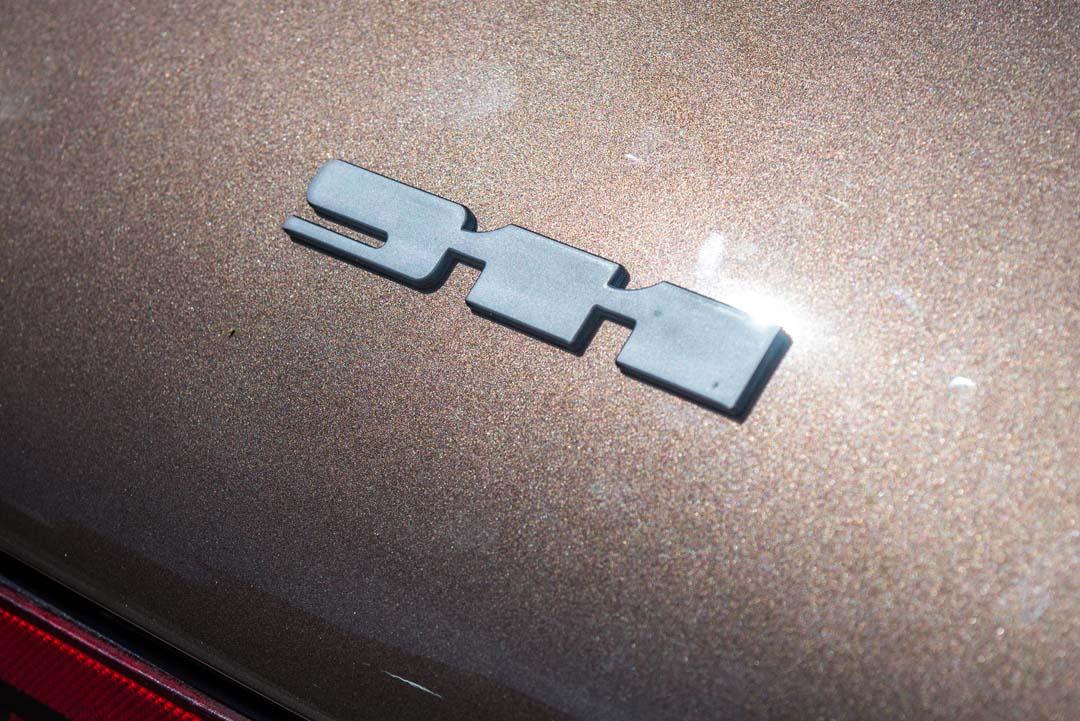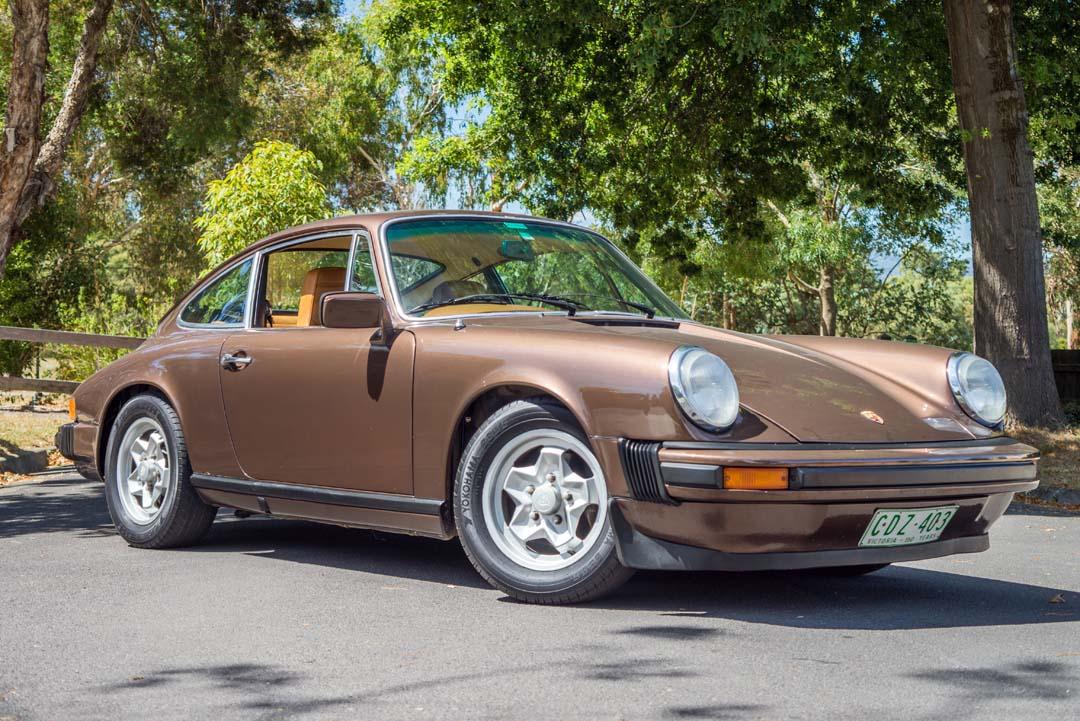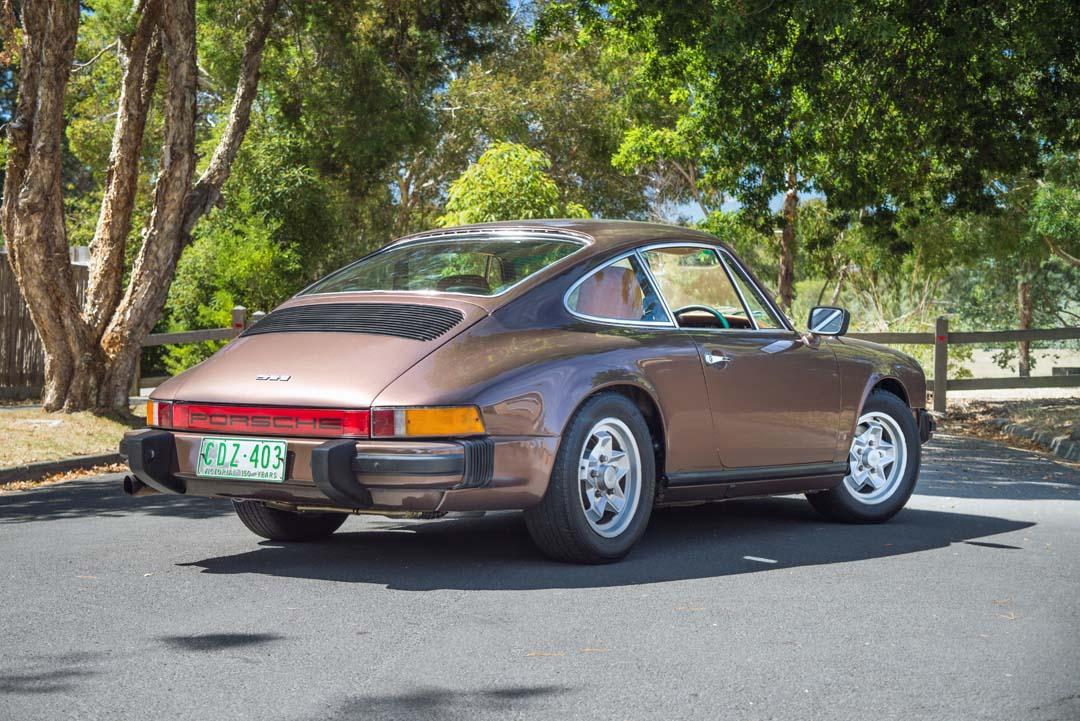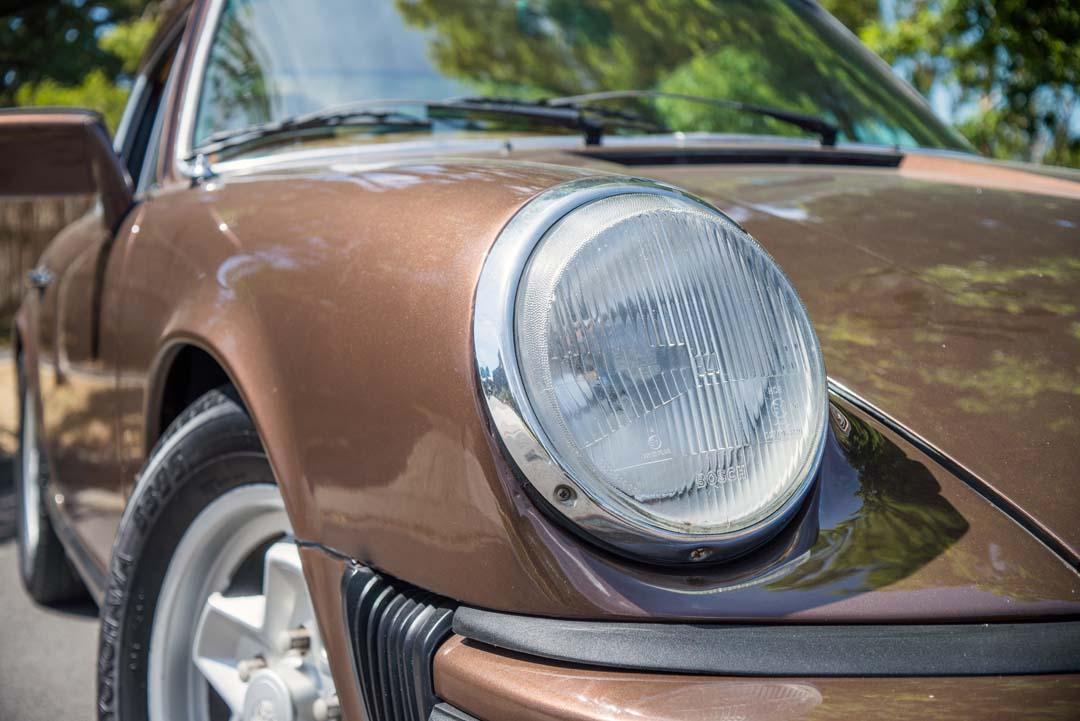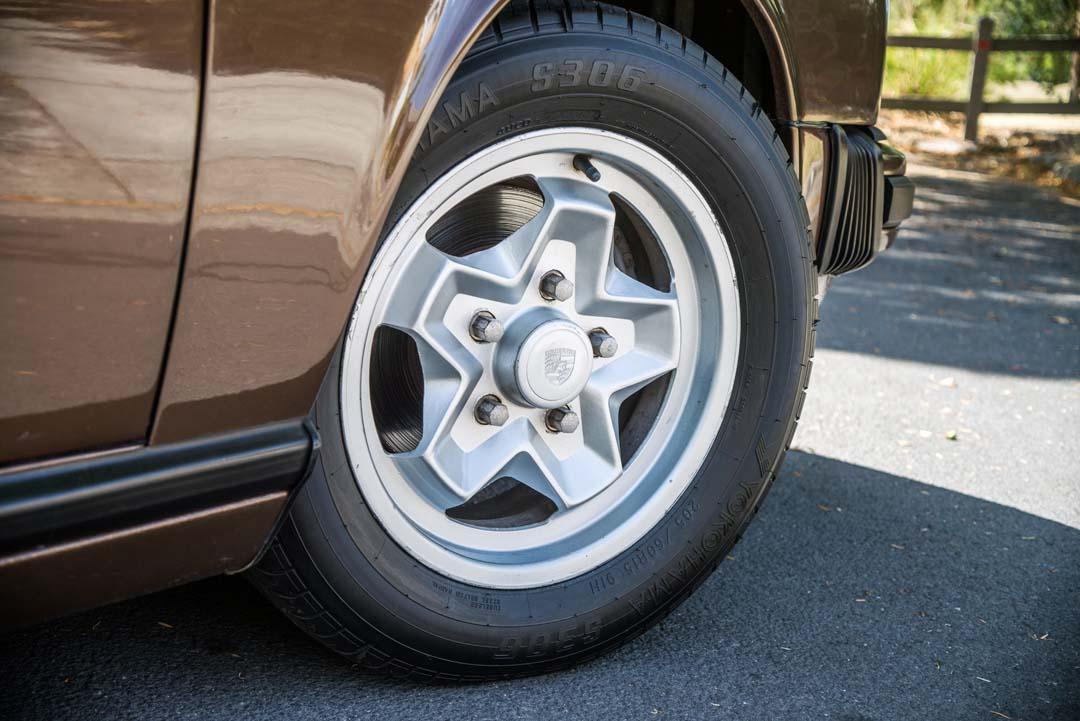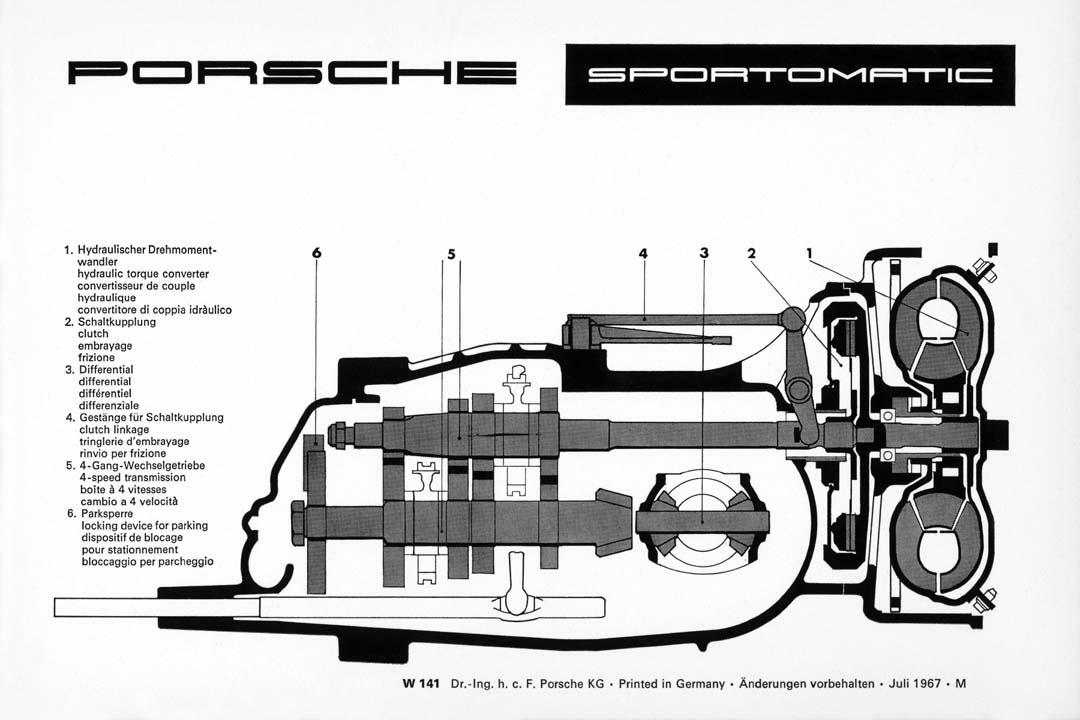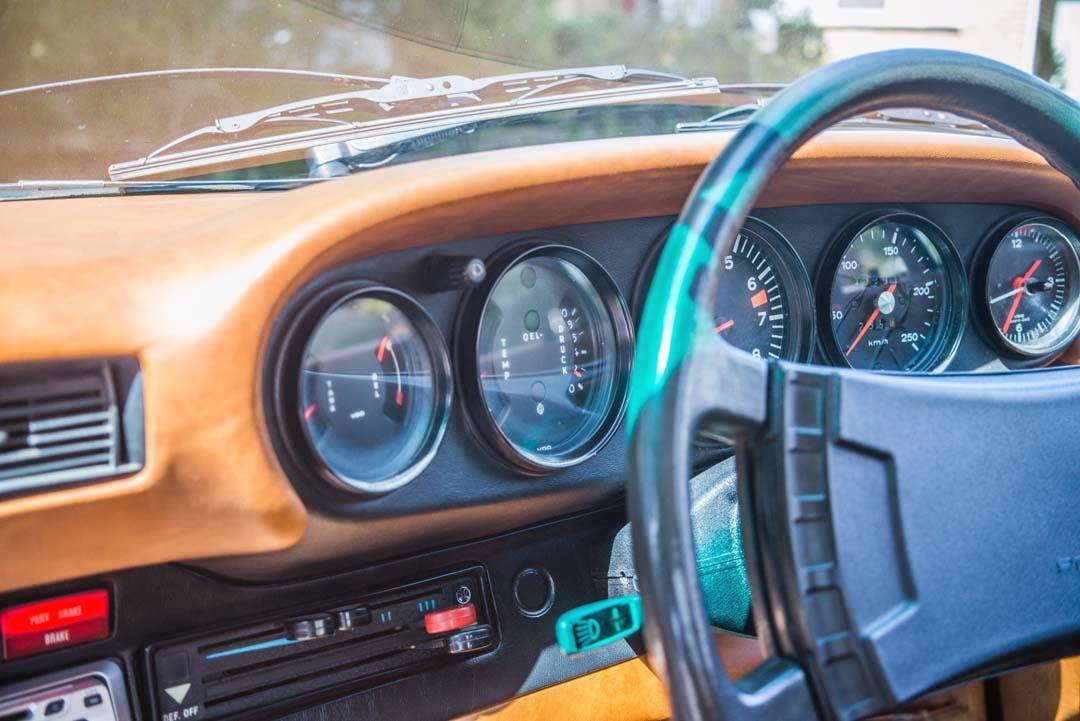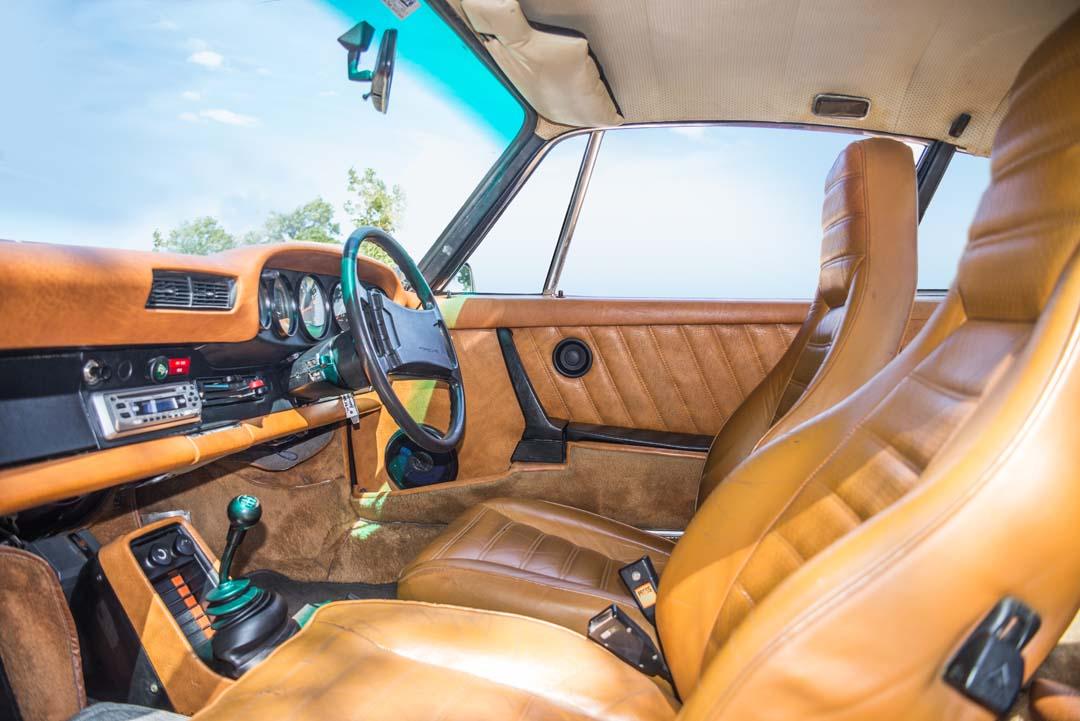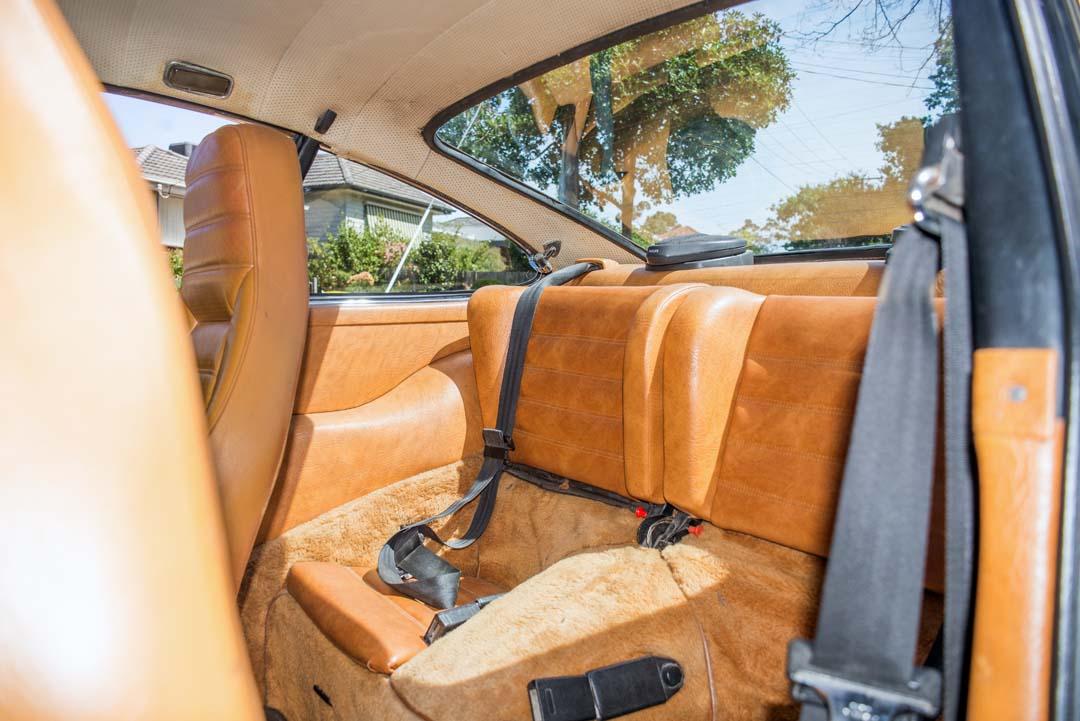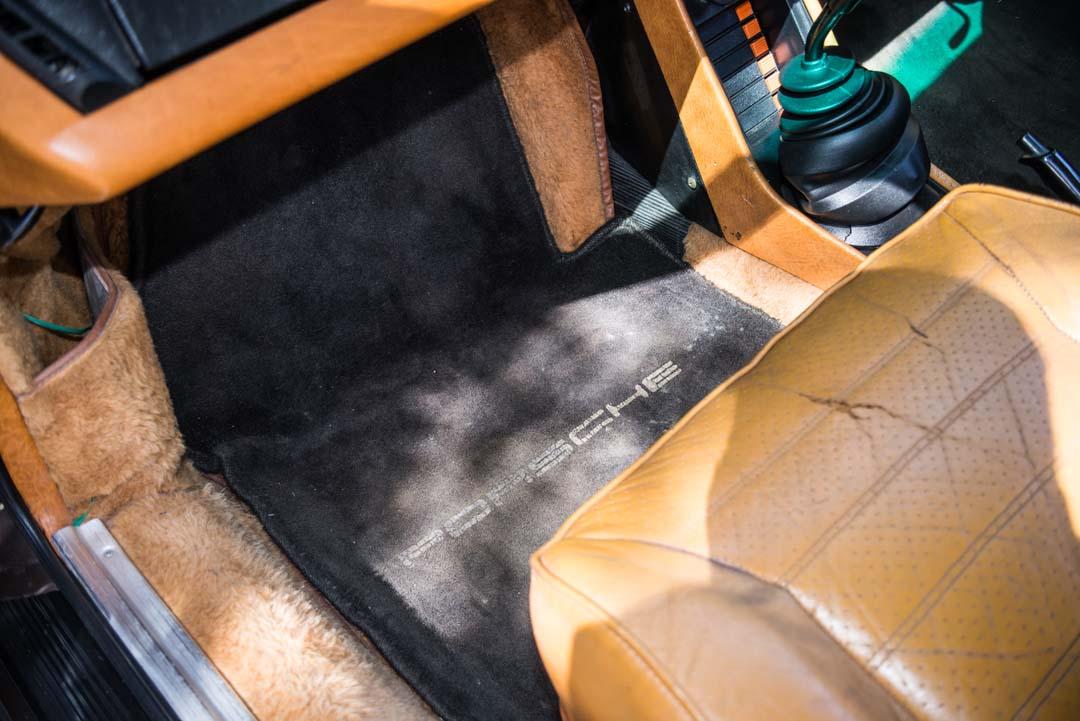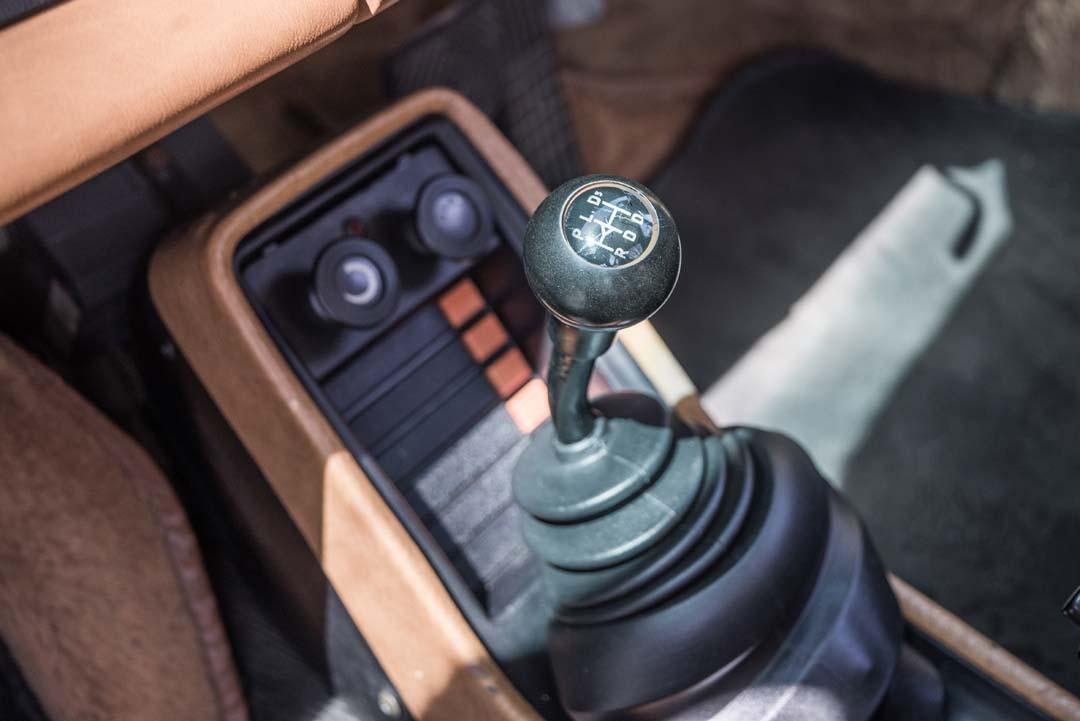To the shock and consternation of motoring enthusiasts around the world Porsche unveiled its first two pedal 911 in 1967. Porsche insisted on calling it an automatic but it wasn’t, not technically, at least.
Named the sportomatic, the manumatic style transmission option was devised by the Zuffenhausen manufacturer in a bid to increase sales to a larger base of potential buyers. Purists and enthusiasts, of course, balked at the idea of an automatic (or at least the removal of the clutch pedal) in a Porsche, but as inner-city traffic, around the world, swelled for potential customers who couldn’t be bothered, or couldn’t drive a manual, but who wanted a 911, the sportomatic was the answer. And the plan worked, almost 25% of all 911’s sold in the United States were sportomatic equipped.
Porsche’s 911 sportomatic also proved its performance and reliability credentials in 1967 when British racing driver, Vic Elford drove a 911R Sportomatic to victory in one of motorsport’s most gruelling tests, the Marathon De La Routewith, an 84-hour-long race around the arduous Nurburgring Nordschlieffe, otherwise known as the ‘Green Hell’.
Seven years after the first sportomatic rolled off the production line, the 1974 Porsche 911 received some significant updates. Visually, the 911 had departed from its slender and sleek (and now highly sought after) longnose shape due to the addition of pronounced bumpers. That was the result of a need to meet safety requirements in the 911’s biggest market, the USA, which affected all manufacturers at the time.
The design was led by designer Wolfgang Möbius and the bumpers were incorporated into the body to create what would become yet another classic Porsche design, known as the impact bumper 911, and it lasted for 15 years.
In addition to the exterior styling change was the replacement of the 2.4-litre in the 911 for a detuned version of the 1973 Carrera RS’s larger 2.7-litre flat six. The larger engine produced 110kW in the 911 and 129kW in the 911S and increased torque output, which was a benefit for the sportomatic torque converter when accelerating below 3000rpm.
The rear-mounted 2.7-litre flat-six also brought with it K-Jetronic CIS (continuous injection system) Bosch fuel injection. It proved to be a reliable fuel delivery which provided an equal amount of fuel to all cylinders, calculated with help from the intake airflow sensor. The system remained relatively unchanged until emissions controls in 1980 required an oxygen sensor, which improved efficiency, but not long after Motronic engine management replaced the Bosch CIS in 1984.
Manumatic not automatic
It’s not an automatic transmission, rather it’s an evolution of Porsche’s 901 four-speed manual transmission with an automatically engaging clutch. It provides for manual operation but without the need to depress the clutch.
Its assembly consists of a the basic four-speed manual transmission gearbox, a hydraulic torque converter and single-vacuum operated diaphragm clutch.
The clutch differs to a conventional manual transmission setup however and is only responsible for engaging and disengaging gears and doesn’t engage neutral for stopping or starting. The torque converter does this instead and so gears can remain engaged when stationary, or when starting the car. This allows for similar operation of an automatic in traffic, however the implementation of a torque converter softens power delivery upto 3000rpm when it’s still engaged.
The transmission has four gears - L, D, D3 and D4 - but L2 is missing and it remains a mystery why. Porsche recommends using L similar to 1 in a manual transmission which requires slipping into D once moving, unless on a steep incline. However, because the torque converter is also a torque multiplier, the sportomatic can drive away in any gear.
D and D3 are shorter geared ratios than in the equivalent manual box and D4 is overdrive. Reverse (R) and park (P) are to the left of the gate and as there is no direct connection between the gearbox and engine due to the torque converter, the vehicle needs to be placed into P when parking to prevent roll-away.
The automatic clutch engages when a vacuum-diaphragm is triggered by a microswitch under the gear lever. Even the slightest pressure on the gear knob will engage the clutch which can be a trap for those who allow their hand to rest on the gearshift. Doing so at any speed and acceleration input will cause the motor to spin freely, however an automatic ignition cut-out prevents the engine from revving to high.
On the road
Thanks to The Healey Factory in Melbourne we were able to test drive a near-original condition 1976 Porsche 911 Sportomatic.
I’m not sure how many times Russell from The Healey Factory told me to keep my hand away from the stick when driving the showroom’s near survivor condition 1976 Copper Brown Metallic Porsche 911 Sportomatic but the advice must of flown out the window just as many.
Taught to keep my hand off the stick when learning to drive (it can damage a transmission’s innards), I was surprised that even the lightest pre-emptive move toward the knob before I needed to change gears would have me revving without acceleration and momentarily scratching my head. The lack of a clutch and the mechanism which takes over clutch control is easily the hardest adjustment to understand in the sportomatic, but it soon becomes second nature.
I was expecting the clutch mechanism, controlled by a 1960’s microswitch, to be a little clunky and inaccurate to engage, but it’s so sensitive that it feels as though it is touch capacitive. After a short orientation drive I was able to get the timing right but it does feel as if there’s something missed in those few seconds where the hand can dangle on the gearshift in a true (clutch pedal controlled) manual car before moving through the gate at the precise moment.
The lack of a clutch pedal while using the transmission feels peculiar but the upside is that left-foot brakers can get the edge. The speed of the automatic clutch is surprisingly quick and there’s no hesitation between shifting, in fact you’d be hard pressed to beat it when going for it. It’s a wondrous piece of technology considering the car’s age.
What was perhaps most surprising is that the sportomatic delivered a far more enjoyable and engaging drive than old magazine and archive reviews would have me believe. Perhaps it was just the excitement of driving an old Porsche with a rumbling flat-six, but the car felt just as connected to the driver as many modern-day manuals do.
The steering was precise and quick, and although the driving position wasn’t perfect the ergonomics seemed to makes sense, or perhaps the lack thereof drifted away while I was caught up in the moment... The weight from the rear-mounted engine over the rear axle does affect the feel from the front and it feels lighter on the front wheels than cars with conventionally mounted engines. Not much of an issue unless you start going too quickly and panic lift in a corner, causing lift-off oversteer.
The sound from the Bosch injection six-cylinder misses the edge of sharpness delivered by carburettors on the older models but it still sounds throaty, and the engine provides smooth performance throughout the entire rev range. The power did deliver more aggressively higher in the rev range, though, and between 4000-6000rpm the 911 was really singing.
Inside, this car is completely original and bar an updated stereo it has a quintessential 1970s vibe thanks to extra plush brown shag pile and a beige colour scheme. The carpet, door panels, hood lining and dash are all in original condition but most interesting was the amount of space afforded by the trunk, which is far better and more practical than the small bucket provided in newer 911s.
The sportomatic loses some of the involvement and purity of a manual 911 but it doesn’t mean it isn’t special and uninvolving to drive. It still feels svelte and elegant, and there’s the certain satisfaction you get when behind the wheel of an old 911.
The 911 sportomatic however is becoming something of a rare beast, so its price is steadily on the increase for good examples. The one tested here in near original condition is an Australian delivery 911 and currently listed at The Healey Factory for $95,000, and if you are in the market for a 911, it might be worth driving one as you could be pleasantly surprised. (Jan 2018)



